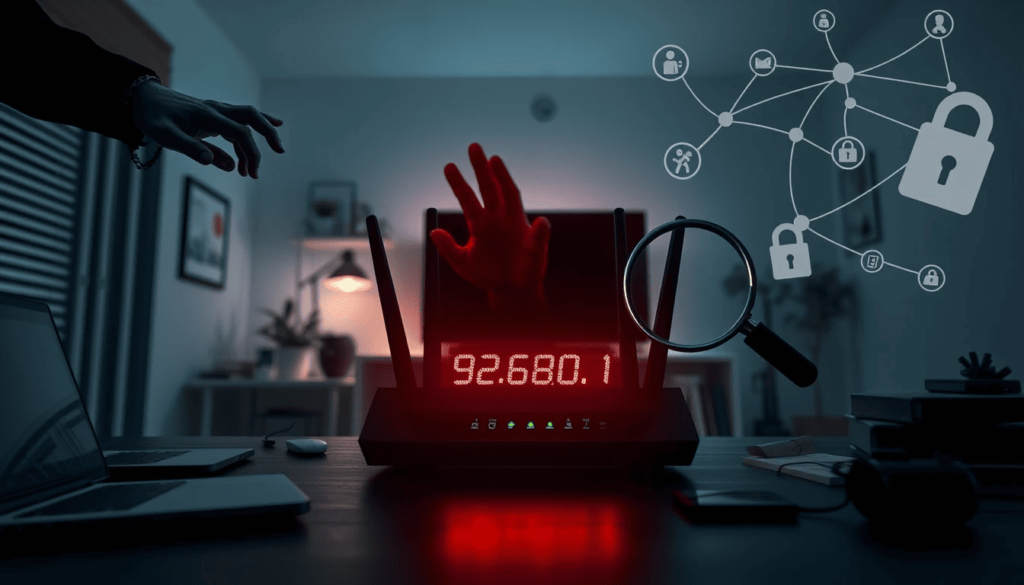Security issues after changing settings on 192.168.0.1 and 192.168.1.1

When modifying the settings on routers with IP addresses 192.168.0.1 and 192.168.1.1, users often encounter various security issues. These problems can range from connection failures to vulnerabilities that may expose your network to attacks. Understanding these issues is crucial for maintaining a secure home or office network.
In this article, we will delve into the common security vulnerabilities associated with changing router settings, the impact of these changes on network connectivity, and the necessary steps to troubleshoot any arising issues. We emphasize the importance of proper configuration to avoid potential pitfalls.
- What are the common security issues when changing router settings?
- How to resolve connection problems after modifying router settings?
- What steps should you take if you encounter a security warning?
- Why is my router changing IP addresses frequently?
- How to configure static IP addresses for printers in a network?
- What should I do if my router displays a blue screen error?
What are the common security issues when changing router settings?
Changing router settings can inadvertently expose your network to a range of security vulnerabilities. Some of the most common issues include:
- Weak passwords: Failing to update the default password increases the risk of unauthorized access.
- Open ports: Leaving unnecessary ports open can allow cybercriminals to exploit your network.
- Firmware vulnerabilities: Not updating the router's firmware can leave it susceptible to known exploits.
- Improper network configuration: Misconfigured settings can lead to a lack of security protocols being enforced.
These security issues after changing settings on 192.168.0.1 and 192.168.1.1 can have serious implications, including data breaches and loss of sensitive information. It’s essential to monitor and adjust settings carefully.
Moreover, common router security vulnerabilities include inadequate firewall settings that may not block unauthorized access attempts. Users should regularly check their configurations to ensure optimal security.
How to resolve connection problems after modifying router settings?
After changing router settings, you may experience connection problems. Here are some effective troubleshooting steps:
- Restart the router: A simple restart can often resolve temporary connectivity issues.
- Check the DHCP settings: Ensure the DHCP server is enabled to provide IP addresses to devices on the network.
- Verify the subnet mask: A wrong subnet mask can prevent devices from communicating properly.
- Reconnect devices: Disconnect and reconnect devices to refresh their connection to the network.
These steps can help mitigate troubleshooting network connection issues and restore normal functionality. Additionally, if the problems persist, consider resetting the router to factory settings as a last resort.
Before making any significant changes, it’s advisable to document current settings so you can revert if needed. Always ensure your devices are compatible with the new settings you implement.
What steps should you take if you encounter a security warning?
Receiving a security warning after changing router settings can be concerning. Here are crucial steps to follow:
- Read the warning carefully: Understand what the warning entails and what actions triggered it.
- Check for unauthorized devices: Inspect your connected devices to ensure no unknown entities are accessing your network.
- Update your firmware: Ensure your router's firmware is up to date to protect against vulnerabilities.
- Change your passwords: If unauthorized access is suspected, immediately change your router and Wi-Fi passwords.
Taking these steps can help mitigate risks associated with security issues after changing settings on 192.168.0.1 and 192.168.1.1. Regularly auditing your network can also help identify potential threats before they escalate.
Additionally, consider enabling security features such as WPA3 encryption and disabling WPS, as these can enhance your router's defense against attacks.
Why is my router changing IP addresses frequently?
Frequent changes to your router's IP address can be perplexing and disruptive. This issue may arise from several factors:
- DHCP lease expiration: The router may be configured to assign IP addresses dynamically, leading to changes when leases expire.
- Network configuration: Misconfigured settings can cause instability in IP address allocation.
- Interference from other devices: Other routers or modems in the vicinity may conflict with your device's settings.
Understanding the reasons behind this behavior is essential for maintaining a stable network. Addressing these root causes can significantly improve your network’s reliability.
Moreover, users should be aware of the risks of changing default IP configurations, which can lead to unexpected conflicts or security vulnerabilities.
How to configure static IP addresses for printers in a network?
Setting static IP addresses for devices such as printers is crucial for consistent connectivity. Follow these steps for configuration:
- Access the router settings: Log in to your router using 192.168.0.1 or 192.168.1.1.
- Locate the DHCP reservation section: This allows you to assign a static IP to your printer.
- Enter the printer's MAC address: Ensure that the MAC address is correctly input to avoid conflicts.
- Assign an IP address: Choose an IP address outside the DHCP range to prevent conflicts.
By configuring static IP addresses for devices, you can eliminate the frustration of frequently changing IPs, ensuring seamless printing and connectivity.
Moreover, this configuration helps in managing network resources effectively, especially in environments with multiple devices.
What should I do if my router displays a blue screen error?
A blue screen error on your router can indicate serious issues. Here are steps to address the problem:
- Reboot the router: Power cycling might resolve temporary glitches causing the error.
- Check connections: Ensure all cables are securely connected and not damaged.
- Reset the router: As a last resort, reset the router to factory settings and reconfigure your network.
This type of error can be a symptom of deeper configuration issues, potentially related to configuration issues or even malware. Regularly scanning your network for vulnerabilities can help prevent such occurrences.
Finally, staying informed about common router security vulnerabilities can help you better prepare for and mitigate issues like blue screen errors.

Deja una respuesta